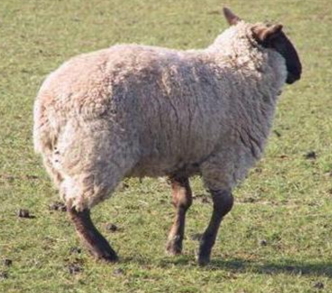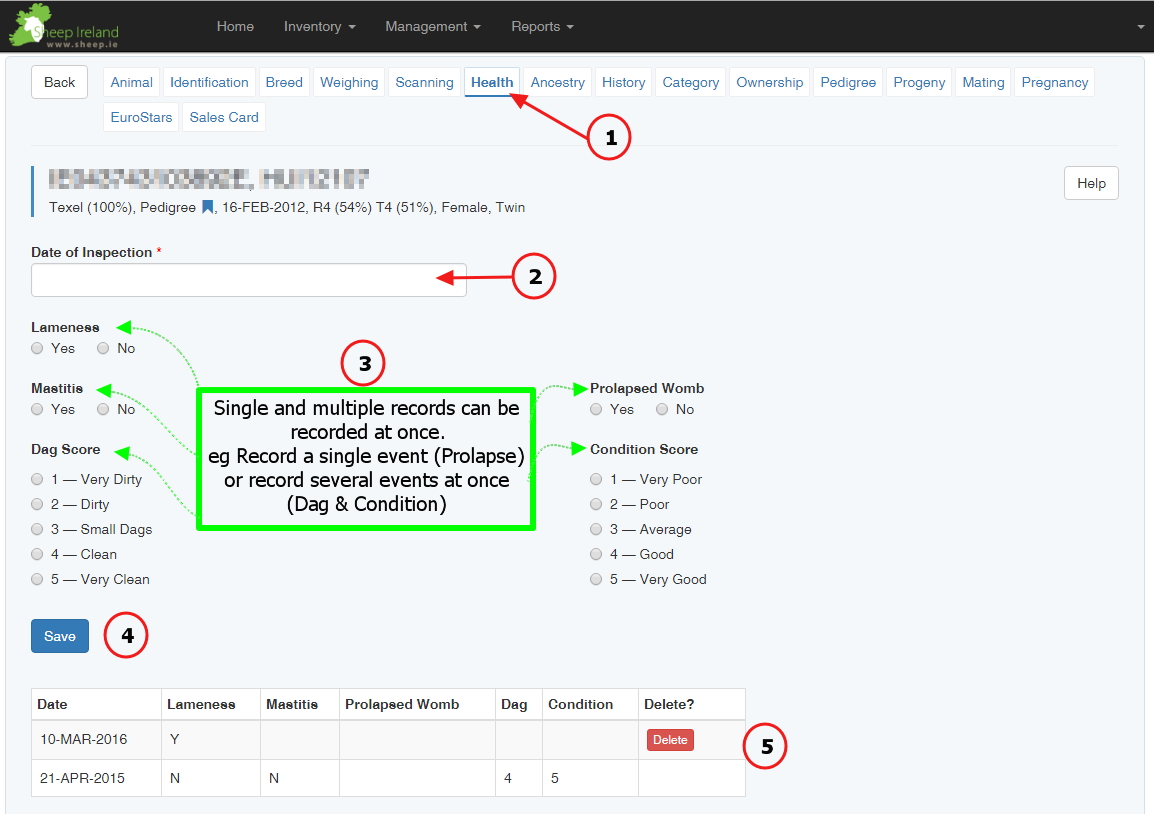The health status of a flock can have a huge impact on the profitability due to reduced thrive, increased treatment costs, increased labour inputs and increased culling rates.
Sheep Ireland have collected tens of thousands of health data records to date and have identified that some health traits are heritable and worth recording as we can predict which bloodlines with the most resistance to these illnesses as a result eg, Mastitis, Lameness, Dagginess etc
Changes to the 2017 €uro-Star Evaluations
- For the first time in Ireland, health data will be incorporated into the €uro-Star genetic evaluations. This health data will only form a small percentage of the overall Terminal and Replacement Indexes due to the current trait heritability being used and overall economic impact of the traits on an overall basis. This does not mean that health traits are not economically important as they most certainly are, but higher impact traits such as ‘Lamb Survival’ and ‘Number of Lambs Born’ will always have a more prominent role within the €uro-Star indexes.
- We do not currently have plans to display a ‘Health Index’ on the Sheep Ireland €uro-Star catalogue output. However we may display this as an individual trait on LambPlus breeders online profiles in the future and perhaps on the Sheep Ireland ram search. Initial accuracies will be very low given the amount of health data collected up to this point, but this will increase over time.
How to record a Health Event
To record a Health event you first must select the intended animal from you flock inventory.
- Select the Health Tab
- Insert the date the record was collected
- Input the data for the animal (see below on how to score each animal for each event)
- Select Save
- View all historical health data recorded on this animal. You can only delete/change health information that has been inserted from your personal account. To do this select the delete button and enter the correct information
Lameness
Lameness is recorded on a Yes / No basis regardless of the severity. Based on the records collected on pedigree flocks by Sheep Ireland we have found an average of 10% of ewes and 17% of lambs have shown signs of lameness and that some bloodlines are more resistant to lameness than others.
Mastitis
Mastitis is recorded on a Yes / No basis regardless of the severity of the infection (even if the infection is only in one side). This event is more difficult to capture however we have identified 2.5% of pedigree ewes with some degree of mastitis during our flock visits just by palpating the udder. Even with this low incidence of recording we are already identifying bloodlines more resistant to the mastitis infection than others.
Prolapsed
Prolapse is recorded on a Yes / No basis. Any ewe that requires a harness/stitch to ensure they do not prolapse should be recorded as a yes. This is with the aim of trying to identify bloodlines that are the most resistant to prolapsing.
Dag Scores
Faecal material can build up around an animal’s hindquarter for a number of reasons, and can result in both increased risk of fly strike and increased costs associated with removal of this faecal material. By scoring the “dagginess” of animals we can aim to assess rams for their resistance to producing animals with excessive dags around the hind quarters. Dag scores can be collected on ewes as well as their lambs and can be collected at any time of year and as often as you like. It is recommended however to score animals twice a year, once at weaning time (at 4 months) and again pre-mating (at 8 months).
The dirtiest lambs are scored 1 and the cleanest lambs are scored 5 (see diagram below) .The key is to be consistent when scoring a group of animals on any given day, during the genetic evaluation Sheep Ireland will remove the effects of differences between years and flocks.
Condition Score
The condition score of an animal has been attributed to every aspect of its production cycle in some shape or from fertility, carcass confirmation and lambing difficulties. The thinnest animals (poorest confirmation) in the flock should be scored 1 and the fattest animals (best confirmation) in the flock should be scored 5. This score should be collected by feeling the animals back and using the diagrams below to assign he scores. The key is to be consistent and to record some variation. If all ewes are scored the same condition then the data has limited value in the evaluation. During the genetic evaluation Sheep Ireland will remove the effects of differences between years and flocks.




